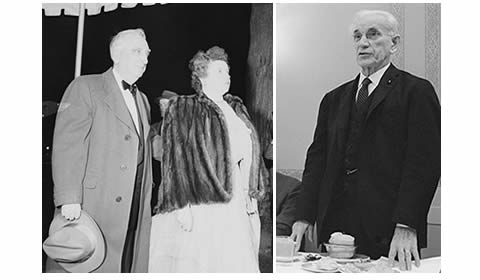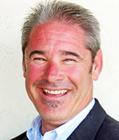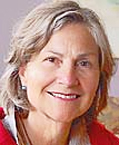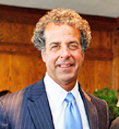STOP THE PRESSES! In a hard hitting lead story by Brett Wilkerson in Saturday’s Santa Rosa Press Democrat called Wineries Court Gay Customers, Wilkerson begins, “Los Angeles couple Brian Chield and Bryan Hollingshead sat around a patio table Saturday sipping Rosso di Sonoma, a red blend from their host Petroni Vineyards, perched high over Sonoma Valley. For a warm weekend in Wine Country, the scene was hardly groundbreaking. But the pair of tasters and the half-dozen other same-sex couples with them were part of a new brand of gathering in the gay and lesbian community built around wine.”
GUESS WHAT, BRETT? This isn’t news, and I defy you and your craven editors to find a single reader who it’s of interest to. The Press Democrat‘s desperate pandering to the booze industry has managed to turn into a parody of itself.
========================================================
![InsideMoves]() TODD WALTON’S great novel, Inside Moves, has been re-issued by Pharos Editions, “dedicated to bringing to light out-of-print, lost, or rare books of distinction.” Inside Moves is certainly a rare book of distinction, and Pharos didn’t have to beg another writer of distinction, Sherman Alexie, to write the introduction:
TODD WALTON’S great novel, Inside Moves, has been re-issued by Pharos Editions, “dedicated to bringing to light out-of-print, lost, or rare books of distinction.” Inside Moves is certainly a rare book of distinction, and Pharos didn’t have to beg another writer of distinction, Sherman Alexie, to write the introduction:
“THE FIRST DRAFT of this introduction was 33 pages. The second draft was 21 pages. You are reading the ninth draft. Why did I struggle to finish this intro and deliver it late to my publisher? Because I caught an elbow in the mouth playing pickup basketball, lost a front tooth, and cracked my upper mandible. Less than 12 hours after the accident I was in a dentist chair, stoned on laughing gas, as I received a human and pig bone combo graft in my face. Yes, I am part-pig now. So when I eat bacon does that make me a cannibal? After a few weeks of recovery, I began the early drafts of this intro. I wrote and wrote and wrote. The intro became a short memoir about my basketball life. It detailed my journey from clumsy grade schooler into farm town high school star to community college recruit who declined those offers and accepted academic scholarships to attend Gonzaga University where I played basketball with other hoops rodents and sometimes ran with the college team. Yes, I’m proud to say that I was able to run with a Division I college team and not completely embarrass myself. I used to be good. Not great. But good enough to play with almost anybody. But I am in decline now. Oh, I still play with former college and professional players, but I have become the old guy who hits a few shots, sets good picks, and will still hit the floor for loose balls. I’m the old guy who gets his face busted by elbows. But I’m also the old guy who ordered a field hockey goalie mask from New Zealand so I can protect my whole face as I returned to my weekly run. Yes, I’m playing ball with a still healing bone graft. I have to play. I would get so depressed without hoops that I’d feel a thousand little deaths. Todd Walton’s Inside Moves is about that same kind of crazy passion for basketball. It’s about that same kind of crazy passion for life. For physical and spiritual survival. I can’t begin to tell you exactly how much Inside Moves means to me. It is the best novel about basketball ever written. And I’m sure you just thought, “Wait, how many novels about basketball are there?” There aren’t enough, that’s for sure. Most of the great sports novels are about baseball. But I think inside moves ranks with the very best sports novels ever written. To give the most basic comparison, inside moves is the Bull Durham of basketball, except with war injuries, amputees, prostitutes, radical surgery, and the lonesome, lonesome wails of hungry souls. After you read it, you’ll want to play hoops with a broken jaw.” — Sherman Alexie
========================================================
RECOMMENDED READING: Highly recommended. If you only read a book every few years, read this one, the clearest explanation you will get of what the hell happened to US. “The Unwinding: An Inner History of the New America” by George Packer. This isn’t one of those massive, foot-noted jobs; it’s told along the lines of Dos Passos’ epic USA Trilogy with implicating headlines and quotes from the increasingly decadent political-financial-celeb elites who’ve profited from the destruction of millions of Americans and the places they live. The book reads like a novel, a very good novel. There’s great stuff in it from the inside on the looting of the system by Geithner-Paulson types and their enablers at the national level of government — mega-swine like Chris Dodd, the Clintons, dupes like Colin Powell, Newt Gingrich, Dianne Feinstein. The mysteriously remote Obama government has, as we know, deferred to all of the above, leaving US exiles in our own country, a country now overtly run by the very wealthy assisted by a permanent elected class, gutted regulatory agencies, a corrupted legal system, and a sock-puppet media. The only people who come off looking pretty good are Alice Waters, Elizabeth Warren and the minority of lonely souls left in our estranged land who try to fight back. How will it end? Not well, and Not Well is accelerating in ways headed straight for major disorder and huge suffering. Packer’s book confirms your worst suspicions, but it should be required reading as an accurate assessment of where WE are.
========================================================
COMMENT OF THE DAY: “At the heart of the matter is this. Industrialism is an entropic project. It accelerates and intensifies entropy, which is to say the drive toward disorder and death. Tradition in human societies is the great moderator of entropy. Of course nothing stays the same forever, but some of us would like to see the human project continue, and to get to place where it can feel comfortable with itself for a while, perhaps even something resembling a new (and completely unfamiliar) golden age, when the people not asleep can be trusted.” (Jim Kunstler)
========================================================
ARTWALK REMINDER!
Editor,
AVArts, AV Chamber of Commerce and Boonville businesses are currently organizing the 16th annual Boonville ArtWalk for Saturday, July 6th from noon-6pm.
Participating artists and craftspeople this year include: Peggy Dart, Paula Gray, Sony Hatcher, Rainbow Hill, Charlie Hochberg, Dennis Hudson, Tom McFadden, Cathleen Michaels & Anderson Valley Students, Alan Porter, Terry Ryder, Ismael Sanchez, Colleen Schenck, Susan Spencer & Michael Wilson, Dan Sitts, Denver Tuttle, Xenia King, Jan Wax & Chris Bing and others.
Tara Lane will be offering a special kids’ art activity on the lawn at Rookie-To, from noon-2pm. The gallery will be hosting a “meet the artists” reception, with music by Wild Oats, from 4-6pm. Lauren’s will also be hosting a reception, from 3-6pm, is featuring a special show of “Wildflowers of Ernest Clayton” (the grandfather Gene Herr and Nancy Praetzel). Aquarelle will have its wine bar open, and appetizers available, throughout the event.
There are still venues available for local artists and craftspeople who would like to participate in this fun event. Send an email to contact@av-arts.org, or call 895-2204, for more information. — Anderson Valley Arts, Boonville
========================================================
ON JUNE 17, 2013, at 7:48am the Mendocino County Sheriff’s Office was contacted by a person who had received second hand information of a possible homicide at a remote location on Spyrock Road in Laytonville. Based upon the reported information, personnel from the Mendocino County Sheriff’s Office, California Highway Patrol and California Department of Fish & Wildlife responded to the location. On June 17 at approximately 11:15am law enforcement personnel arrived at the location and found one deceased person, presumed murdered. Sheriff’s Detectives have responded to the location and have begun an investigation into the circumstances of the person’s death. Additional information will be disseminated by press release as the investigation continues. Anyone with information in regards to this incident is urged to contact the Sheriff’s Office Tip-Line by calling 707-234-2100. (Sheriff’s Office Press Release)
========================================================
RAILHEADS SEEK STILLMAN’S OUSTER FROM NCRA BOARD
by Hank Sims (Courtesy, LostCoastOutpost.com)
![Stillman]()
Stillman
A couple of months ago we had some fun with the news that Arcata City Councilmember Alex Stillman had managed to get herself appointed to the board of directors of the North Coast Railroad Authority, a body that has heretofore been more or less dominated by True Believers in Humboldt’s imminent return to the glory days of striped suspenders and choo-choo caps. In our writeup we channeled the voice of those who fervently dream of the train’s glorious arrival on the shores of Humboldt Bay after a decade and a half of absence, showering the land with riches untold. Hopefully we had a few yuks in the process.
Well, who’s laughing now?
At its regular meeting tomorrow night, the Eureka City Council will take up the matter of Mayor Frank Jager’s apostasy in voting for Stillman over full-bore railhead Doug Strehl, mayor of Fortuna. And someday next month, the Mayor’s City Selection Committee — a body that comprises the mayors of Humboldt County’s seven incorporated cities — will come together to decide whether or not to rescind their appointment of Stillman, and if so, who to appoint in her place.
The pressure seems to have come from attorney Bill Bertain of Eureka, who wrote an ominous letter to the Mayor’s City Selection Committee shortly after Stillman was appointed, back in May. In his letter Bertain makes the case that the selection of Stillman to occupy the NCRA board seat set aside for representatives of the incorporated cities along the old railroad line violated City Selection Committee internal procedure. Bertain charges that the committee’s governing rules and procedures require candidates for such appointments to submit their materials to staff three weeks in advance of a meeting. Neither Strehl nor Stillman did this. Therefore, Bertain says, the appointment is defunct. Unless the committee rectifies this, he hints, the committee is about to be on the nasty end of a lawsuit.
Bertain also declares Stillman ideologically unfit for the office. “By her public statements for quite some time now, Alexandra Stillman has disqualified herself from serving on the NCRA Board of Directors,” Bertain writes. “Although I understand that Alexandra Stillman has recently declared her support for passenger rail service between Eureka and Arcata, I believe she has consistently and vocally opposed to the return of freight service to Humboldt County.”
The threat was apparently enough to prompt the committee to review the matter with its lawyer and revisit the topic at a future meeting. But Marcella Clem, the executive director of the Humboldt County Association of Governments, under whose aegis meetings of the committee are held, says that her agency is completely confident that Bertain has no legal case. The three-week requirement, she told the Outpost, is not an application deadline; it says only that if candidates for a position wish to have their materials distributed to other members of the committee, then they have to get those materials to staff three weeks in advance. In fact, Clem said, any elected official could have shown up on the day of the meeting itself, back in May, and thrown their name into the hat then and there, with no advance notice at all.
So when the committee reconvenes, there will be two items on the agenda. 1). Should the committee reconsider its appointment to the NCRA? If so, and only if so: 2). Who should it appoint?
So is Stillman out? Maybe not! Back at the original meeting, Eureka Mayor Frank Jager initially supported Stehl but switched his vote to Stillman in order to break a deadlock. Only six of the seven mayors were present — Ferndale Mayor Stuart Titus was absent, for reasons unknown. Jager’s vote-switch has prompted the Eureka City Council to take up the matter at its meeting tomorrow night. The council will, in all likelihood, strongly recommend that Jager support Strehl in place of Stillman. In spite of his strong support for trails and rail skepticism —
“It just boggles my mind that people would want to tie up [a trail] section between Bracut and Eureka waiting for something to happen,” Jager told the Outpost — he indicated that he would follow the council’s pleasure.
But that would only take us back to the original 3-3 deadlock, with Arcata, Blue Lake and Trinidad voting for Stillman and Rio Dell, Fortuna and Eureka holding up the Strehl banner. The whole question then hinges on Ferndale Mayor Stuart Titus — a reasonable person in a sometimes less than reasonable town.
========================================================
THE SLUNGSHOT/ROPE LOCK
by Bruce McEwen
Craig Barnett of Fort Bragg was on his way to check in with his probation officer and stopped at a second-hand store where one can often find a good deal on any number of useful things. On this occasion Mr. Barnett found a tool loggers often use to tighten down a rope on a load where steel cable isn’t necessary.
Barnett is a logger by profession and recognized the tool as a rope lock, something he would either use himself or offer to his employer, Anderson Logging of Fort Bragg. The problem arose when he reached the Ten Mile Court in Fort Bragg, where the probation office is located; he couldn’t get past security with the rope lock and since he was on foot, he couldn’t leave it in his vehicle. So he hid it in the bushes.
Mr. Barnett’s probation officer, Kathy Voorhees, saw him put something in the bushes and called security. While she kept Barnett in her office, the security officer, David Croft, went outside with a hand-held metal detector and found the tool. Mr. Croft brought it to Ms. Voorhees, and she, not knowing what it was, called in a cop, Deputy Eric Riboli, who said it was a weapon, a “slung-shot.”
We’ll get back to the slung-shot/rope lock, but first, by way of introduction, let’s step back and put this incredibly huge and powerful private contractor, Mr. Croft’s employer, Universal Protection Service (UPS) in perspective.
Universal Protection Service, with a local headquarters in Napa, is a subsidiary of the even mightier corporation, Universal Services of America (USA). In 2009 UPS was placed on an exclusive list of approved providers of security for our courthouses by the Department of Homeland Security. UPS was also awarded Safety Act “protection.” The Safety Act of 2002 is part of the Homeland Security Act and encourages corporations to develop and deploy their own ideas about how best to “protect” us from “terrorists.” I shudder to contemplate what this kind of “encouragement” may be. But under the Safety Act, the “protection” UPS gets is limitation from liability to third parties (us) to a predetermined amount of liability insurance coverage, exclusive jurisdiction in federal court for suits against UPS, prohibition on joint and several liability for non-economic damages, a complete bar on punitive damages and prejudgment interest, and a reduction in the plaintiffs’ recovery by amounts that the plaintiff receives from collateral sources.
“We are very excited that our application for the Safety Act designation has been approved,” Steve Jones, the co-CEO and Chief Operating Officer of Universal Services of America, told the Los Angeles Times. Mr. Jones then went on to gloat expansively about how nice it was to rake in billions of tax dollars and operate his various and extensive business interests with absolute impunity in these strange times.
Universal Protection Services was founded by former San Francisco Police Inspector Louis J. Ligouri, Jr. (along with a former US Secret Service Agent who is so deep under cover I couldn’t even find out his/her name). They like to hire off duty or retired law enforcement officers and police academy graduates, but they will take anyone who can come through one of their background checks without a blemish and finish a training course in Napa, at 505 Alexis Court. The mandatory drug testing leaves most of our unemployed locals out of the picture.
But the UPS staff at the County Courthouse in Ukiah and the Ten Mile Court in Fort Bragg are all devoted AVA readers and a pretty great team of officers who take their jobs seriously while maintaining a sense of humor and cordiality. They also have a nice collection of pocket knives and cork screws because so many people try to bring these prohibited items into the courthouse, then go back out and hide them in the bushes when they find out they can’t. The security officers then go out and sweep the grounds with a hand-held metal detector and collect the contraband items.
This was essentially what happened to Mr. Barnett’s rope lock/slung-shot. Security found it with the hand-held metal detector, called a wand. Probation Officer Voorhees and Sheriffs Deputy Riboli both considered the tool a weapon, Mr. Barnett was arrested for violating his probation, which prohibited the possession of any weapons, and the DA filed a petition to have his probation revoked and send him to prison. The hearing was held last week at the Ukiah courthouse, and DA David Eyster handled the case himself.
Ms. Voorhees was put on the stand and she said that as Barnett approached the courthouse she saw him drop something in the bushes. The security guard brought it in and she recognized it as a slungshot, “a weapon similar to a mace,” she said.
“Objection,” said Louis Finch. Mr. Finch is a lawyer from the Alternate Public Defender’s Office, and as such he was representing Craig Barnett, who was still in custody, since the incident happened on May 16th. “The witness doesn’t know the legal definition,” Finch said.
Judge Richard Henderson overruled the objection. “She perceived it as a such,” he said.
DA Eyster said, “As a probation officer, is this [he had a photograph of the thing, which he was holding up for her to see] what you would consider a dangerous weapon?”
Ms. Voorhees said yes, it was.
“And as such, was the defendant, under the terms of his probation, allowed to have it in his possession?”
“No.”
“Did you see him put it in the bushes outside the courthouse?”
“I didn’t actually see him put it there,” Voorhees said. “He was behind the bushes and I couldn’t see his hands. But it looked like he was putting something in the bushes and the security officer found it there.”
“And you confronted him with it later?”
“Yes. He said he bought it at a thrift store.”
“That’s all I have,” Eyster said.
Mr. Finch is such a piss-poor lawyer that he wasn’t promoted two years ago when the head lawyer in his office, Mr. Robinson, retired. Finch is so bad he was passed over for promotion again when the next senior lawyer, Mr. Schlosser, went on extended medical leave last month. There were only the three of them, Robinson, Schlosser and Finch. Another lawyer from the regular Public Defender’s Office had to be brought in to supervise Finch and handle all the serious cases, a Ms. Patricia Littlefield.
“Are you familiar with the tools used in logging?” Finch asked.
PO Voorhees paused thoughtfully.
“But you do know Mr. Barnett was sometimes employed by Anderson Logging, don’t you?”
“Yes,” Voorhees said.
“Do you know what a rope lock is?”
Again Voorhees took time to reflect.
Finch grew impatient. “How long have you been a probation officer?”
“About a year and a half.”
Here is another great job opportunity for the locally unemployed who can pass a drug test. Jim Brown recently retired as head of the county’s probation office, which has greatly expanded due to the governor’s prisoner realignment program. Jason Locatelli of that office recently told me that as the system becomes more and more expanded, the need for probation officers continues to grow. This pseudo-cop field (probation and security) is the next big career opportunity in a world rapidly filling up with criminals — all we need is one or two more “substance abuse-laws” (and the legislature is working on them frantically, mainly to justify the DEA) then we’ll all be either criminals or cops.
Mr. Finch said, “Did you ask Mr. Barnett what the tool was for and how it was used?”
“No.”
“Have you been through security at the courthouse entrance?”
“Yes.”
“So you are familiar with how metal objects are not allowed in the courthouse?”
“No.”
And she wouldn’t be, either. Not necessarily, at least. Because probation officers and all the other regular faces who the security people are familiar with are not put through the shakedown. A certain amount of common sense allows the business of the court to proceed without an overweening winnowing of everyone who comes and goes.
“But you are aware, are you not, that a lot of people put things in the bushes when they come into the courthouse — metal things they can’t bring past security?”
“I haven’t seen them do that,” she answered. Given the fact that her one-way window in the probation office would give her an ideal opportunity to see such things, and that’s how Barnett got nailed, Mr. Finch made no secret of his suspicion that Ms. Voorhees was tinting her answer with the tincture of disingenuity. He snorted tersely and said he had nothing further.
Judge Henderson wanted to see the so-called weapon/tool but the DA didn’t have it with him. He offered to send someone for it, but Henderson said he’d just like to look a little closer at the photo of it, Exhibit One.
Deputy Eric Riboli was called to the stand and asked to rehearse some of his weapons training. Then he was shown the photo. He recognized it as the same item that had been found in the bushes outside the Ten Mile Court.
DA Eyster: “Are you familiar with the term slungshot?”
Deputy Riboli: “I am, yes.”
DA Eyster: “Can you tell me what this is?”
Deputy Riboli: “It could be used as a slungshot.”
Mr. Finch: “Are you familiar with logging tools?”
Riboli: “No.”
Finch: “Nothing further.”
Finch called his client, Craig Barnet to the stand and asked him, “Did you go to the Ten Mile Court on May 16th?”
“Yes.”
“Why?”
“I had an appointment with my PO.”
“Did you do anything on the way?”
“Yes. I stopped and shopped at a thrift store where I bought a rope lock.”
“A what?”
“A rope lock.”
“Can you explain how it works?”
“It binds a rope, so the harder you pull, the more it squeezes down on the rope. It is used for various tree and brush jobs in logging and brush work.”
“Do you often work in that kind of work?”
“Yes. I’ve worked as a tree faller, clearing brush, setting chokers and other things associated with logging.”
“Is this one of the tools you commonly use in that kind of work?”
“Yes, it is.”
“Why did you leave it in the bushes outside the courthouse?”
“I’ve been there before with metal objects and the security people told me if I didn’t want to lose it, I’d have to leave it outside.”
DA Eyster: “How did you arrive at the courthouse?”
Barnett: “I got a ride.”
Eyster: “How did you get home?”
Barnett: “I walked.”
Eyster: “Do you remember this probation order?”
Barnett: “Yes.”
Eyster: “Is this your signature … right here?”
Barnett: “Yes.”
Eyster: “Do you remember reading this condition, this one right here?”
Barnett: “I don’t remember, but I must have read it.”
Eyster: “So you agreed to that condition?”
Barnett: “Yes.”
Eyster: “Didn’t you think it might be a good idea to ask your PO if this [the rope lock/slungshot] would be allowed for you to have?”
Barnett: “I just thought of it as a tool.”
Finch: “What were you going to do with it?”
Barnett: “I’d just got a job with Rob Shandell; I was either going to use it or give it to Rob.”
Finch: “Your honor, a lot of tools can be used as weapons. But it makes sense for my client to have this tool for his job. He has explained how it works and he has a logging background. There is a reasonable, innocent — as well as a sinister — explanation for why he had it.”
Eyster: “I’m not sure I’ve heard of a logger buying things at a thrift store.”
Henderson: “The explanation that the object is a tool is reasonable and so is the evidence from the officer that testified a device of this type can also be used as a weapon which is not unreasonable — so it is somewhat suspicious — but given the evidence that the defendant was working as a logger and the tool was part of his ordinary work tools, the court finds there is not sufficient evidence to hold him on the charges.”
Eyster: “Can I ask the court to order him to report to probation?”
Henderson: “Yes. So ordered.”
When Eyster loses a case against Finch, something must be up. Maybe they were just trying to show that the public defenders and alternates are something more than welfare recipients, after all.
========================================================
FINCH PREVAILS
To the Editor:
As a longtime admirer of Bruce McEwen’s work, it is with heavy heart I write to correct some recent assertions made in his article (“The Slungshot/Rope Lock”) detailing last week’s courthouse goings-on. McEwen describes a hearing held in Judge Henderson’s court in which DA Dave Eyster sought to violate Craig Barnett’s probation. Much of the information written was incorrect, starting with the misspelling of Mr. Barnett’s lawyer’s name, Lewis Finch.
The article then seeks to illustrate how inept the attorney is by pointing out that Finch was not hired as the Alternate Defender when a co-worker, Bert Schlosser, departed the office. The story says former Public Defender Patricia Littlefield was then appointed. Little of this is true.
Finch did not apply for a job which Schlosser did not hold, and did not step down from. The job was vacated by Berry Robinson 18 months ago and Patricia Littlefield was appointed. Ms. Littlefield has never, in her 26 years as a Mendocino County lawyer, been employed in the public defender’s office, always having been an associate of Richard Petersen’s law firm
Lewis Finch is described as a “piss poor lawyer” but no survey of local lawyers and judges would agree with this defamation, and in fact I’d bet most would say Finch ranks among the best criminal lawyers in the county. McEwen’s notion that Littlefield came to be the Alternate Defender “to handle all the serious cases” is unsupportable. In the past quarter century Finch has represented hundreds — perhaps thousands — of clients charged with everything in the penal code, from rape and murder to shoplifting and probation violations.
It should be emphasized that violating a defendant’s probation involves the lowest standard of proof in the entire criminal justice system. Think about it: The defendant is a convicted criminal and he agrees, as part of his probation, to obey all laws, including not dropping a gum wrapper on the sidewalk. A “preponderance” (a scant 51%) of the evidence is sufficient to violate, which makes it the lowest threshold in the business. For a DA to violate someone’s probation is equivalent to shotgunning fat trout in a small birdbath.
Yet Finch prevails. Eyster loses. McEwen cannot believe what he sees, and cannot believe it again when he writes the story, so he attributes the judge’s decision to a shady allegation that “something must be up.” He then thinks the DA’s “Maybe were just trying to show that the (Alternate Defender attorneys) are something more than welfare recipients after all.”
Well, OK, but I suspect McEwen’s ongoing and nonstop criticism of public defender lawyers coupled with his relentless admiration for prosecutors suggests something other than disdain for those on welfare.
Thomas Hine (Alternate Defender Investigator), Ukiah
========================================================
DAVID BROOKS, TOM FRIEDMAN, BILL KELLER WISH SNOWDEN HAD JUST FOLLOWED ORDERS
By Norman Solomon
Edward Snowden’s disclosures, the New York Times reported on Sunday, “have renewed a longstanding concern: that young Internet aficionados whose skills the agencies need for counterterrorism and cyberdefense sometimes bring an anti-authority spirit that does not fit the security bureaucracy.”
Agencies like the NSA and CIA — and private contractors like Booz Allen — can’t be sure that all employees will obey the rules without interference from their own idealism. This is a basic dilemma for the warfare/surveillance state, which must hire and retain a huge pool of young talent to service the digital innards of a growing Big Brother.
With private firms scrambling to recruit workers for top-secret government contracts, the current situation was foreshadowed by novelist John Hersey in his 1960 book The Child Buyer. When the vice president of a contractor named United Lymphomilloid, “in charge of materials procurement,” goes shopping for a very bright ten-year-old, he explains that “my duties have an extremely high national-defense rating.” And he adds: “When a commodity that you need falls in short supply, you have to get out and hustle. I buy brains.”
That’s what Booz Allen and similar outfits do. They buy brains. And obedience.
But despite the best efforts of those contractors and government agencies, the brains still belong to people. And, as the Times put it, an “anti-authority spirit” might not fit “the security bureaucracy.”
In the long run, Edward Snowden didn’t fit. Neither did Bradley Manning. They both had brains that seemed useful to authority. But they also had principles and decided to act on them.
Like the NSA and its contractors, the U.S. military is in constant need of personnel. “According to his superiors … Manning was not working out as a soldier, and they discussed keeping him back when his unit was deployed to Iraq,” biographer Chase Madar writes in The Passion of Bradley Manning. “However, in the fall of 2009, the occupation was desperate for intelligence analysts with computer skills, and Private Bradley Manning, his superiors hurriedly concluded, showed signs of improvement as a workable soldier. This is how, on October 10, 2009, Private First Class Bradley Manning was deployed … to Iraq as an intelligence analyst.”
In their own ways, with very different backgrounds and circumstances, Bradley Manning and Edward Snowden have confounded the best-laid plans of the warfare/surveillance state. They worked for “the security bureaucracy,” but as time went on they found a higher calling than just following orders. They leaked information that we all have a right to know.
This month, not only with words but also with actions, Edward Snowden is transcending the moral limits of authority and insisting that we can fully defend the Bill of Rights, emphatically including the Fourth Amendment.
What a contrast with New York Times columnists David Brooks, Thomas Friedman and Bill Keller, who have responded to Snowden’s revelations by siding with the violators of civil liberties at the top of the US government.
Brooks denounced Snowden as “a traitor” during a June 14 appearance on the PBS NewsHour, saying indignantly: “He betrayed his oath, which was given to him and which he took implicitly and explicitly. He betrayed his company, the people who gave him a job, the people who trusted him. … He betrayed the democratic process. It’s not up to a lone 29-year-old to decide what’s private and public. We have — actually have procedures for that set down in the Constitution and established by tradition.”
Enthralled with lockstep compliance, Brooks preached the conformist gospel: “When you work for an institution, any institution, a company, a faculty, you don’t get to violate the rules of that institution and decide for your own self what you’re going to do in a unilateral way that no one else can reverse. And that’s exactly what he did. So he betrayed the trust of the institution. He betrayed what creates a government, which is being a civil servant, being a servant to a larger cause, and not going off on some unilateral thing because it makes you feel grandiose.”
In sync with such bombast, Tom Friedman and former Times executive editor Bill Keller have promoted a notably gutless argument for embracing the NSA’s newly revealed surveillance programs. Friedman wrote (on June 12) and Keller agreed (June 17) that our government is correct to curtail privacy rights against surveillance — because if we fully retained those rights and then a big terrorist attack happened, the damage to civil liberties would be worse.
What a contrast between big-name journalists craven enough to toss the Fourth Amendment overboard and whistleblowers courageous enough to risk their lives for civil liberties.
(Norman Solomon is co-founder of RootsAction.org and founding director of the Institute for Public Accuracy. His books include “War Made Easy: How Presidents and Pundits Keep Spinning Us to Death.”)
 T
T
 ========================================================
======================================================== * * *
* * * SO THIS IS CIVILIZATION. Spent a day in Edinburgh, concluding that if Americans were still teachable we could learn how to manage cities from the Scots. For example, the center of San Francisco — and let’s call the center of our fairest large town the cable car turnaround at Powell and Market — is a medieval spectacle of drunks, drug addicts, cruising criminals, and the unsequestered insane. At Edinburgh’s civic center a nexus of bus, cab, train, restaurants, and coffee shops in the shadow of the magnificent castle, I counted exactly four bums in as many blocks, three of whom presented neatly printed messages asking for money. With a merry hands-across-the-waters, “Here ya go, pal,” I dropped some coins onto one man’s handkerchief-sized cloth, realizing too late I’d gifted him to the tune of about five bucks because I haven’t mastered the money here. “I’ll be fooked,” the bum exclaimed through a toothless grin. “A fookin’ Yank!” There were no visible lurks of the ubiquitous type menacing the public areas of every city and town of any size in America, and a national health service that treats crazy people rather than freeing them to die on the streets. Of course a national health care system is “socialism,” and we can’t have that, can we?
SO THIS IS CIVILIZATION. Spent a day in Edinburgh, concluding that if Americans were still teachable we could learn how to manage cities from the Scots. For example, the center of San Francisco — and let’s call the center of our fairest large town the cable car turnaround at Powell and Market — is a medieval spectacle of drunks, drug addicts, cruising criminals, and the unsequestered insane. At Edinburgh’s civic center a nexus of bus, cab, train, restaurants, and coffee shops in the shadow of the magnificent castle, I counted exactly four bums in as many blocks, three of whom presented neatly printed messages asking for money. With a merry hands-across-the-waters, “Here ya go, pal,” I dropped some coins onto one man’s handkerchief-sized cloth, realizing too late I’d gifted him to the tune of about five bucks because I haven’t mastered the money here. “I’ll be fooked,” the bum exclaimed through a toothless grin. “A fookin’ Yank!” There were no visible lurks of the ubiquitous type menacing the public areas of every city and town of any size in America, and a national health service that treats crazy people rather than freeing them to die on the streets. Of course a national health care system is “socialism,” and we can’t have that, can we? THIS POEM was engraved on the plinth honoring the Scots who fought in Spain:
THIS POEM was engraved on the plinth honoring the Scots who fought in Spain: On June 7, 2013, at about 6:57pm, Deputies from the Mendocino County Sheriff’s Office were dispatched to the 700 block of Port Road in Point Arena for a reported domestic related dispute. Deputies also received information that the involved parties were associated with a newer black Ford Mustang. While responding to the location, Deputies observed a vehicle leaving the area that matched the provided description. Deputies initiated an investigative traffic stop on the vehicle and made contact with the two occupants. Both occupants readily admitted to being cohabitating partners and the involved parties of the reported dispute. Deputies observed that the adult male had a visible injury to his arm and observed that the female, Christina Nuchols, 36, of Glenhaven, California, was intoxicated. Deputies were able to determine, by speaking to both parties, that Nuchols scratched the male during the alcohol related argument and caused the observed injuries to the male. Nuchols was subsequently arrested and transported to the Mendocino County Jail where she was booked on the open charge of Domestic Violence Battery and held in lieu of $25,000.00 bail. Nuchols was also booked on two active arrest warrants issued out of Colusa County. Nuchols had a $25,000 bail felony warrant for possession of a controlled substance and a $10,000 bail misdemeanor warrant for being under the influence of a controlled substance.
On June 7, 2013, at about 6:57pm, Deputies from the Mendocino County Sheriff’s Office were dispatched to the 700 block of Port Road in Point Arena for a reported domestic related dispute. Deputies also received information that the involved parties were associated with a newer black Ford Mustang. While responding to the location, Deputies observed a vehicle leaving the area that matched the provided description. Deputies initiated an investigative traffic stop on the vehicle and made contact with the two occupants. Both occupants readily admitted to being cohabitating partners and the involved parties of the reported dispute. Deputies observed that the adult male had a visible injury to his arm and observed that the female, Christina Nuchols, 36, of Glenhaven, California, was intoxicated. Deputies were able to determine, by speaking to both parties, that Nuchols scratched the male during the alcohol related argument and caused the observed injuries to the male. Nuchols was subsequently arrested and transported to the Mendocino County Jail where she was booked on the open charge of Domestic Violence Battery and held in lieu of $25,000.00 bail. Nuchols was also booked on two active arrest warrants issued out of Colusa County. Nuchols had a $25,000 bail felony warrant for possession of a controlled substance and a $10,000 bail misdemeanor warrant for being under the influence of a controlled substance. On June 2, relatives of 46-year-old Yolanda Orozco went to the Burger King in Willits and ordered a few hamburgers.
On June 2, relatives of 46-year-old Yolanda Orozco went to the Burger King in Willits and ordered a few hamburgers.

 Selkirk’s warriors had joined an invasion of England under their last king, James, meeting the Brits at Flodden for a thorough defeat. Only one Selkirkian, a man named Fletcher, survived. He staggered back into town with Selkirk’s battle flag, waving it in slow, sad flourishes to silently explain the catastrophe to the townspeople. And then he dropped dead.
Selkirk’s warriors had joined an invasion of England under their last king, James, meeting the Brits at Flodden for a thorough defeat. Only one Selkirkian, a man named Fletcher, survived. He staggered back into town with Selkirk’s battle flag, waving it in slow, sad flourishes to silently explain the catastrophe to the townspeople. And then he dropped dead. It’s a great honor to be selected standard bearer as the population from miles around remembers the Battle of Flodden and recalls the days of the Commons patrols. In 1913, my grandfather was a standard bearer representing the Colonial Society, which is not a collection of nostalgic imperialists, but an association of men and women drawn from the vast Scots diaspora. Us returnees were acknowledged as exiles in a large ceremony featuring some witty speeches — “I won’t say why Mr. Anderson was exiled” — and quite moving songs celebrating the beauty of the town. This year, my nephew, Robert Mailer Anderson, was standard bearer, a tense responsibility that culminates with the complicated flag ritual in which the standard bearers, in multi-step, choreographed moves set to a single trumpet (I think), re-enact that single surviving warrior’s return from the Battle of Flodden more than 400 years ago.
It’s a great honor to be selected standard bearer as the population from miles around remembers the Battle of Flodden and recalls the days of the Commons patrols. In 1913, my grandfather was a standard bearer representing the Colonial Society, which is not a collection of nostalgic imperialists, but an association of men and women drawn from the vast Scots diaspora. Us returnees were acknowledged as exiles in a large ceremony featuring some witty speeches — “I won’t say why Mr. Anderson was exiled” — and quite moving songs celebrating the beauty of the town. This year, my nephew, Robert Mailer Anderson, was standard bearer, a tense responsibility that culminates with the complicated flag ritual in which the standard bearers, in multi-step, choreographed moves set to a single trumpet (I think), re-enact that single surviving warrior’s return from the Battle of Flodden more than 400 years ago.


 TODD WALTON’S great novel, Inside Moves, has been re-issued by Pharos Editions, “dedicated to bringing to light out-of-print, lost, or rare books of distinction.” Inside Moves is certainly a rare book of distinction, and Pharos didn’t have to beg another writer of distinction, Sherman Alexie, to write the introduction:
TODD WALTON’S great novel, Inside Moves, has been re-issued by Pharos Editions, “dedicated to bringing to light out-of-print, lost, or rare books of distinction.” Inside Moves is certainly a rare book of distinction, and Pharos didn’t have to beg another writer of distinction, Sherman Alexie, to write the introduction:


